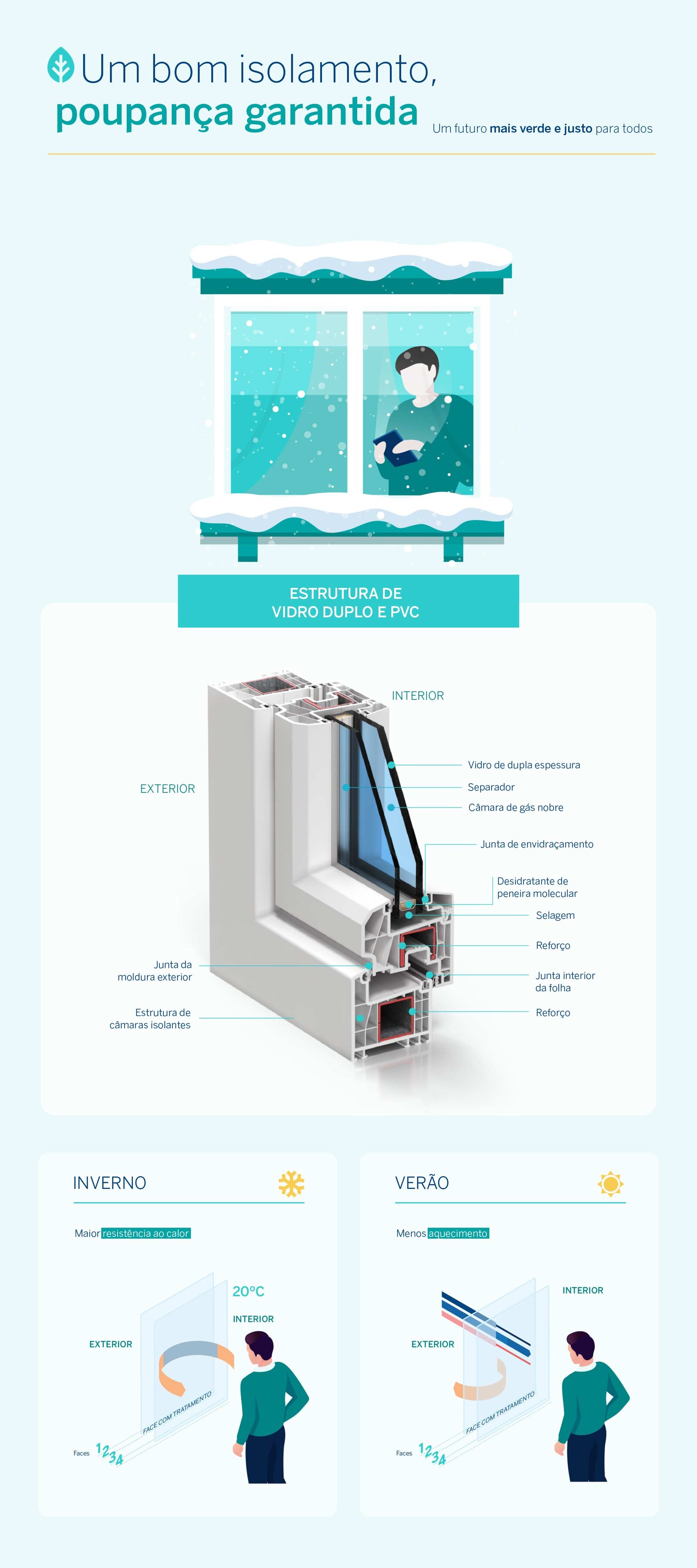The winter months bring the biggest expenses in lighting, heaters and fireplaces. However, the vast majority of buildings and houses are not prepared due to poor insulation of facades, floors and windows.
This energy loss is a major economic waste and has a high environmental impact. You can save and be more sustainable just by opting for good insulation in your home. For this reason, it is not surprising that home renovations are an especially important aspect of the European Union's sustainability plans. These plans underscore initiatives aimed at improved insulation for the windows and choosing the right materials and finishes.
The importance of knowing your windows well
“From an energy point of view, windows are one of the most critical points in a building,” explains José Manuel Larumbe Ilundain, architect and director of BSP Consultores, a company specializing in architectural consultancy. "About 25% to 30% of energy is lost through windows."
Windows are very vulnerable to temperature changes between the outside and the inside. This is especially important in winter, when trying to maintain a comfortable temperature indoors, and in summer, when trying to keep the house cool with air conditioning.
The most efficient structures insulate the house better and contribute to greater comfort, both from a thermal and air filtration point of view. There are different ways to improve your home's efficiency when making changes to your windows. The best option is to switch completely to windows with more insulating materials.
Tips for saving energy and reducing your home bills
How to choose the right window to save energy
When choosing a window, it is essential to pay attention to its shape and the components of the frame and glass. The glass occupies three quarters of the window, where most exposure to thermal exchanges with the outside takes place. That's why choosing a good design is essential.
We suggest opting for glass with multiple panes, known as IGU (Insulating Glass Unit). This type of glass has an air chamber capable of providing insulation between the interior and the exterior. According to the architect from BPS Consultores, the most energy efficient ones contain argon gas.
There is low-emissivity glass, which loses less energy than conventional glass, or selective glass, which is designed for areas where both winter heat losses and summer heat gains need to be controlled.
The frame material is also very important. When it comes to the most common materials, the best insulators are wood and PVC, especially when it comes to a hollow six-chamber profile (also the most expensive option).
We do not recommend metal frames, as this material is a good thermal conductor and does not work well as an insulator. When choosing frames of this type, it is important to ensure that they have thermal bridge break. “Metal frames with thermal bridge break have a series of insulating materials in the internal composition of the profile that minimize energy transfer,” explains the architect.
If the goal is to save energy, we recommended paying attention to the window's opening and closing system: the frames must avoid leaking air to the outside.
Finally, it is important to also weigh the carbon footprint left by the production of these materials. The calculation is complicated, as it depends on many factors, but the Food and Agriculture Organization of the United Nations (FAO) estimates that, in terms of frames, the materials with the least environmental impact are wood and PVC. Metals such as aluminum are the most polluting.
Apply caulking and other solutions
There are alternative options for homes where renovation is not desired or possible. The most common option is to apply caulking, silicone strips, and other materials that stick to the edges of the structures for a more hermetic seal. This a very inexpensive option that brings good results, although these types of solutions need frequent replacement.
Another option is to apply sealants to visible cracks on structures and joints. In these cases, materials such as silicone or expandable foam work well. On the other hand, textile elements are also a solution. Installing thick curtains can help create another barrier between the interior and exterior of the house.
If the loss of energy occurs through the blinds, they can be replaced with others made of more insulating materials or installing parts that minimize air intake. “These are parts that are placed inside the inlet and outlet mechanisms of the shutter belt to minimize air intake, which generate a lot of energy loss,” says José Manuel Larumbe.
When choosing a window, it is essential to pay attention to its shape and the components of the frame and glass.

